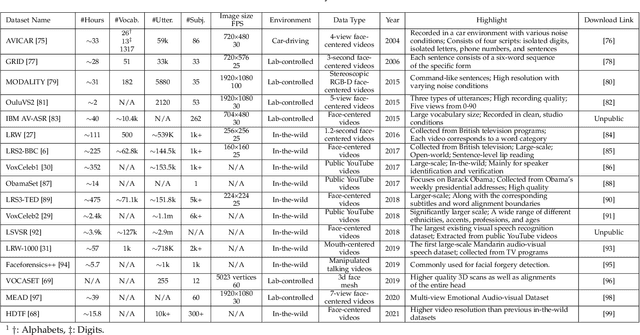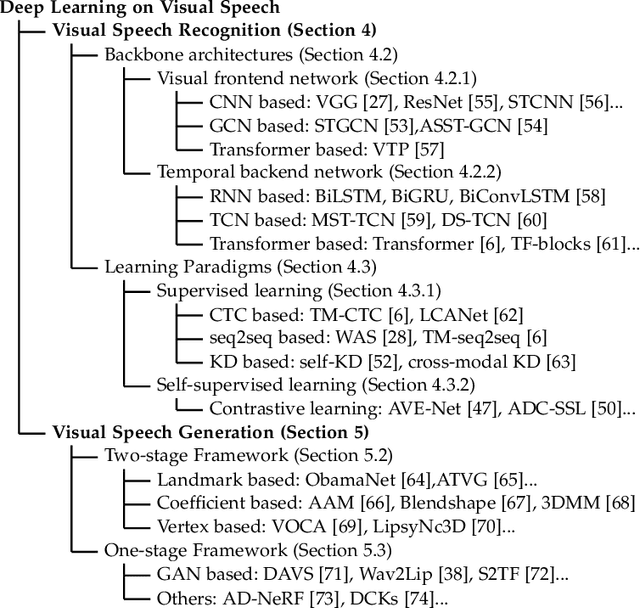Gangyao Kuang
MTSGL: Multi-Task Structure Guided Learning for Robust and Interpretable SAR Aircraft Recognition
Apr 23, 2025Abstract:Aircraft recognition in synthetic aperture radar (SAR) imagery is a fundamental mission in both military and civilian applications. Recently deep learning (DL) has emerged a dominant paradigm for its explosive performance on extracting discriminative features. However, current classification algorithms focus primarily on learning decision hyperplane without enough comprehension on aircraft structural knowledge. Inspired by the fined aircraft annotation methods for optical remote sensing images (RSI), we first introduce a structure-based SAR aircraft annotations approach to provide structural and compositional supplement information. On this basis, we propose a multi-task structure guided learning (MTSGL) network for robust and interpretable SAR aircraft recognition. Besides the classification task, MTSGL includes a structural semantic awareness (SSA) module and a structural consistency regularization (SCR) module. The SSA is designed to capture structure semantic information, which is conducive to gain human-like comprehension of aircraft knowledge. The SCR helps maintain the geometric consistency between the aircraft structure in SAR imagery and the proposed annotation. In this process, the structural attribute can be disentangled in a geometrically meaningful manner. In conclusion, the MTSGL is presented with the expert-level aircraft prior knowledge and structure guided learning paradigm, aiming to comprehend the aircraft concept in a way analogous to the human cognitive process. Extensive experiments are conducted on a self-constructed multi-task SAR aircraft recognition dataset (MT-SARD) and the effective results illustrate the superiority of robustness and interpretation ability of the proposed MTSGL.
Bottom-Up Scattering Information Perception Network for SAR target recognition
Apr 07, 2025Abstract:Deep learning methods based synthetic aperture radar (SAR) image target recognition tasks have been widely studied currently. The existing deep methods are insufficient to perceive and mine the scattering information of SAR images, resulting in performance bottlenecks and poor robustness of the algorithms. To this end, this paper proposes a novel bottom-up scattering information perception network for more interpretable target recognition by constructing the proprietary interpretation network for SAR images. Firstly, the localized scattering perceptron is proposed to replace the backbone feature extractor based on CNN networks to deeply mine the underlying scattering information of the target. Then, an unsupervised scattering part feature extraction model is proposed to robustly characterize the target scattering part information and provide fine-grained target representation. Finally, by aggregating the knowledge of target parts to form the complete target description, the interpretability and discriminative ability of the model is improved. We perform experiments on the FAST-Vehicle dataset and the SAR-ACD dataset to validate the performance of the proposed method.
Graph Signal Processing for Heterogeneous Change Detection Part II: Spectral Domain Analysis
Aug 08, 2022



Abstract:This is the second part of the paper that provides a new strategy for the heterogeneous change detection (HCD) problem, that is, solving HCD from the perspective of graph signal processing (GSP). We construct a graph to represent the structure of each image, and treat each image as a graph signal defined on the graph. In this way, we can convert the HCD problem into a comparison of responses of signals on systems defined on the graphs. In the part I, the changes are measured by comparing the structure difference between the graphs from the vertex domain. In this part II, we analyze the GSP for HCD from the spectral domain. We first analyze the spectral properties of the different images on the same graph, and show that their spectra exhibit commonalities and dissimilarities. Specially, it is the change that leads to the dissimilarities of their spectra. Then, we propose a regression model for the HCD, which decomposes the source signal into the regressed signal and changed signal, and requires the regressed signal have the same spectral property as the target signal on the same graph. With the help of graph spectral analysis, the proposed regression model is flexible and scalable. Experiments conducted on seven real data sets show the effectiveness of the proposed method.
Graph Signal Processing for Heterogeneous Change Detection Part I: Vertex Domain Filtering
Aug 08, 2022



Abstract:This paper provides a new strategy for the Heterogeneous Change Detection (HCD) problem: solving HCD from the perspective of Graph Signal Processing (GSP). We construct a graph for each image to capture the structure information, and treat each image as the graph signal. In this way, we convert the HCD into a GSP problem: a comparison of the responses of the two signals on different systems defined on the two graphs, which attempts to find structural differences (Part I) and signal differences (Part II) due to the changes between heterogeneous images. In this first part, we analyze the HCD with GSP from the vertex domain. We first show that for the unchanged images, their structures are consistent, and then the outputs of the same signal on systems defined on the two graphs are similar. However, once a region has changed, the local structure of the image changes, i.e., the connectivity of the vertex containing this region changes. Then, we can compare the output signals of the same input graph signal passing through filters defined on the two graphs to detect changes. We design different filters from the vertex domain, which can flexibly explore the high-order neighborhood information hidden in original graphs. We also analyze the detrimental effects of changing regions on the change detection results from the viewpoint of signal propagation. Experiments conducted on seven real data sets show the effectiveness of the vertex domain filtering based HCD method.
Deep Learning for Visual Speech Analysis: A Survey
May 22, 2022



Abstract:Visual speech, referring to the visual domain of speech, has attracted increasing attention due to its wide applications, such as public security, medical treatment, military defense, and film entertainment. As a powerful AI strategy, deep learning techniques have extensively promoted the development of visual speech learning. Over the past five years, numerous deep learning based methods have been proposed to address various problems in this area, especially automatic visual speech recognition and generation. To push forward future research on visual speech, this paper aims to present a comprehensive review of recent progress in deep learning methods on visual speech analysis. We cover different aspects of visual speech, including fundamental problems, challenges, benchmark datasets, a taxonomy of existing methods, and state-of-the-art performance. Besides, we also identify gaps in current research and discuss inspiring future research directions.
Attentional Feature Refinement and Alignment Network for Aircraft Detection in SAR Imagery
Jan 19, 2022



Abstract:Aircraft detection in Synthetic Aperture Radar (SAR) imagery is a challenging task in SAR Automatic Target Recognition (SAR ATR) areas due to aircraft's extremely discrete appearance, obvious intraclass variation, small size and serious background's interference. In this paper, a single-shot detector namely Attentional Feature Refinement and Alignment Network (AFRAN) is proposed for detecting aircraft in SAR images with competitive accuracy and speed. Specifically, three significant components including Attention Feature Fusion Module (AFFM), Deformable Lateral Connection Module (DLCM) and Anchor-guided Detection Module (ADM), are carefully designed in our method for refining and aligning informative characteristics of aircraft. To represent characteristics of aircraft with less interference, low-level textural and high-level semantic features of aircraft are fused and refined in AFFM throughly. The alignment between aircraft's discrete back-scatting points and convolutional sampling spots is promoted in DLCM. Eventually, the locations of aircraft are predicted precisely in ADM based on aligned features revised by refined anchors. To evaluate the performance of our method, a self-built SAR aircraft sliced dataset and a large scene SAR image are collected. Extensive quantitative and qualitative experiments with detailed analysis illustrate the effectiveness of the three proposed components. Furthermore, the topmost detection accuracy and competitive speed are achieved by our method compared with other domain-specific,e.g., DAPN, PADN, and general CNN-based methods,e.g., FPN, Cascade R-CNN, SSD, RefineDet and RPDet.
Adaptive Local Structure Consistency based Heterogeneous Remote Sensing Change Detection
Aug 29, 2020



Abstract:Change detection of heterogeneous remote sensing images is an important and challenging topic in remote sensing for emergency situation resulting from nature disaster. Due to the different imaging mechanisms of heterogeneous sensors, it is difficult to directly compare the images. To address this challenge, we explore an unsupervised change detection method based on adaptive local structure consistency (ALSC) between heterogeneous images in this letter, which constructs an adaptive graph representing the local structure for each patch in one image domain and then projects this graph to the other image domain to measure the change level. This local structure consistency exploits the fact that the heterogeneous images share the same structure information for the same ground object, which is imaging modality-invariant. To avoid the leakage of heterogeneous data, the pixelwise change image is calculated in the same image domain by graph projection. Experiment results demonstrate the effectiveness of the proposed ALSC based change detection method by comparing with some state-of-the-art methods.
 Add to Chrome
Add to Chrome Add to Firefox
Add to Firefox Add to Edge
Add to Edge